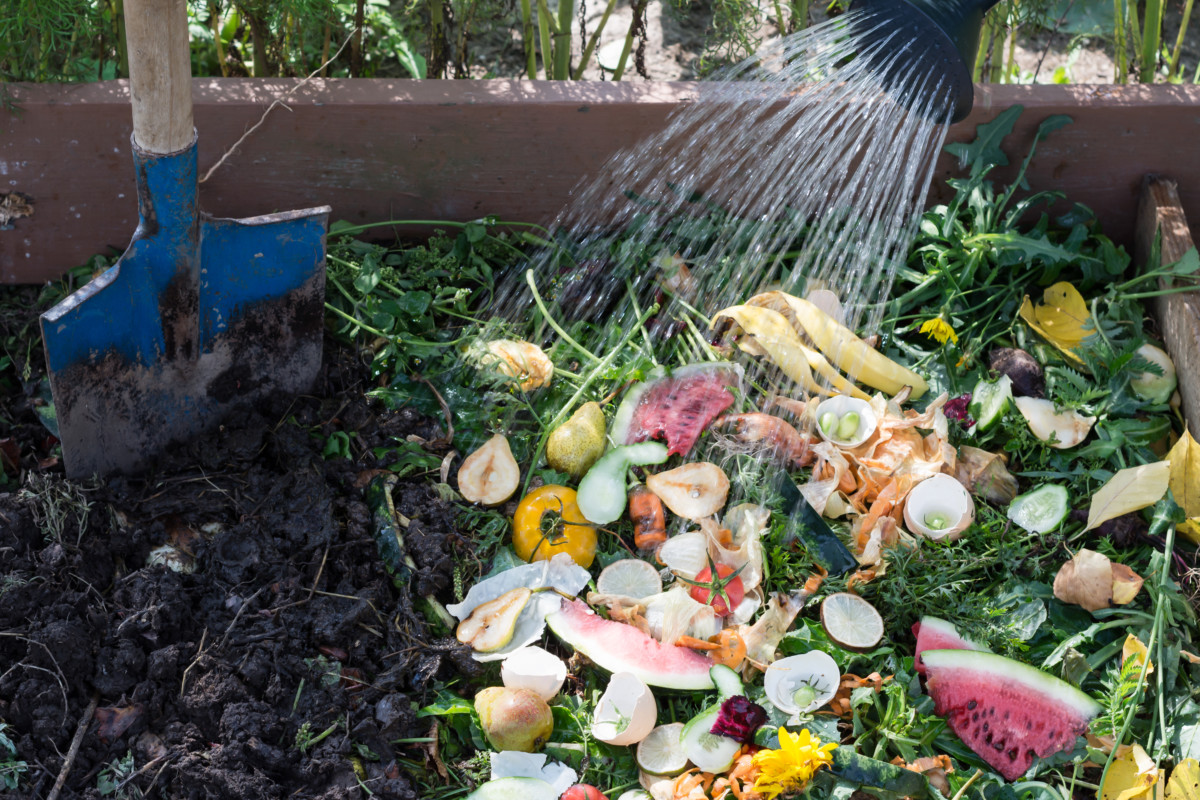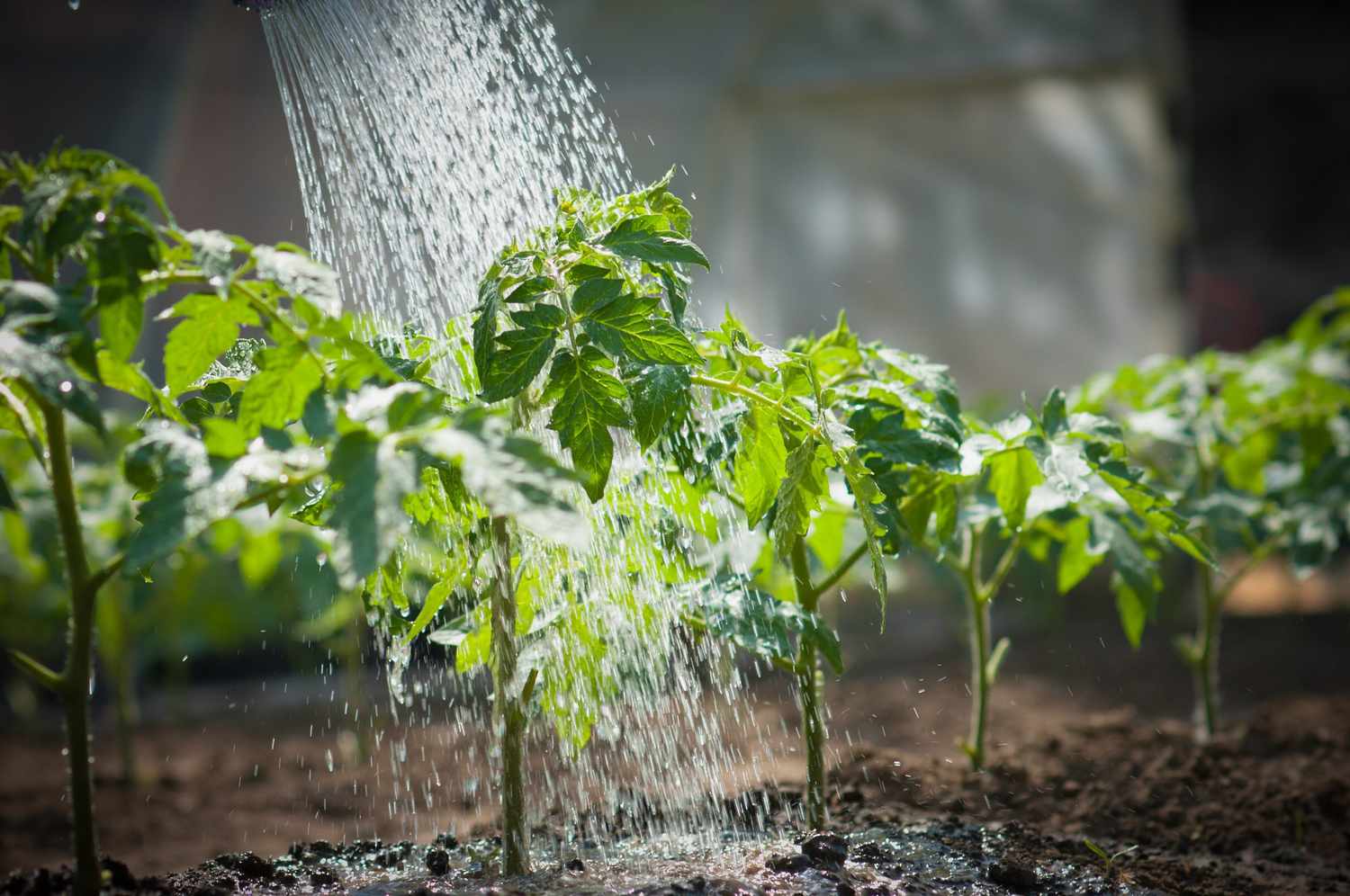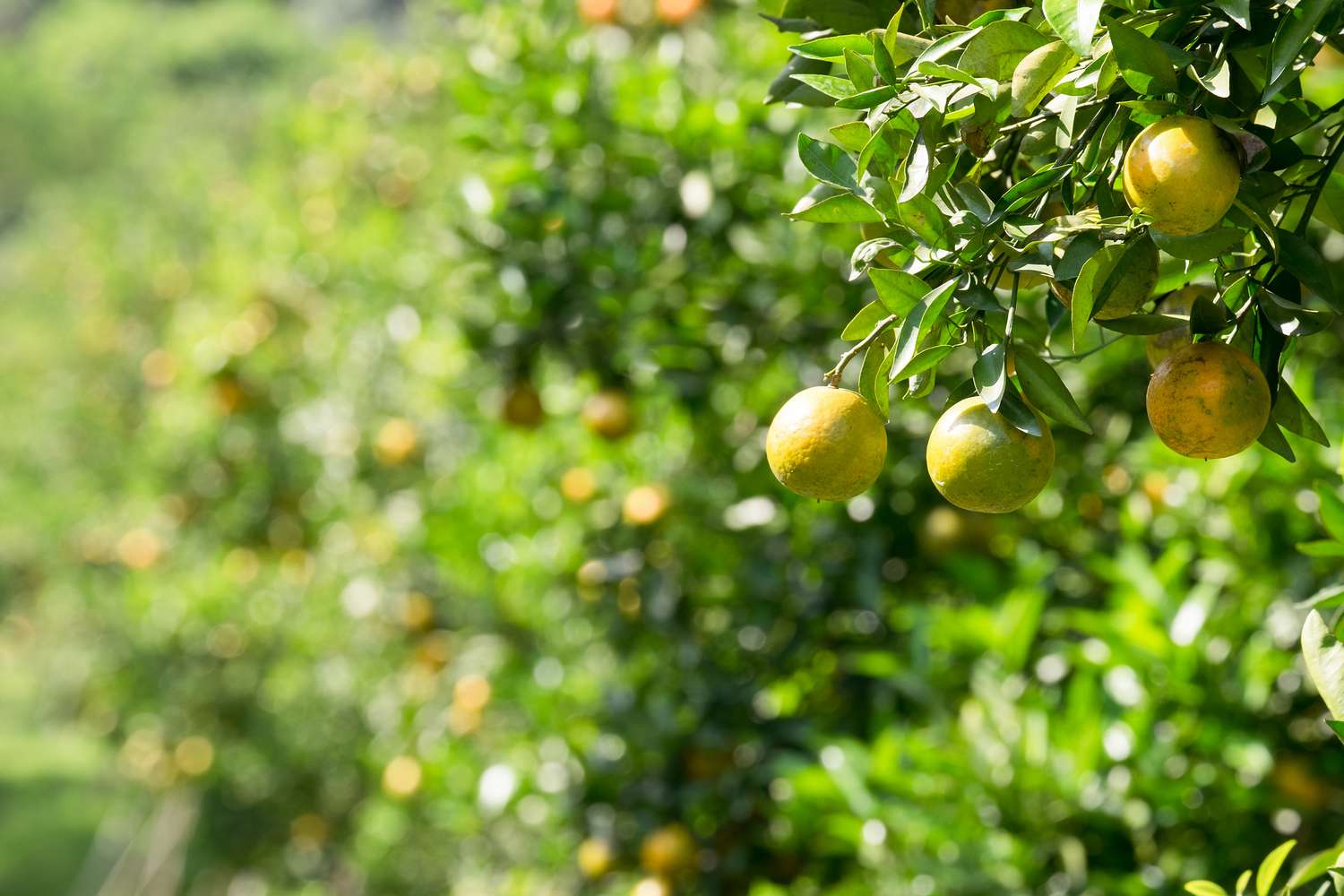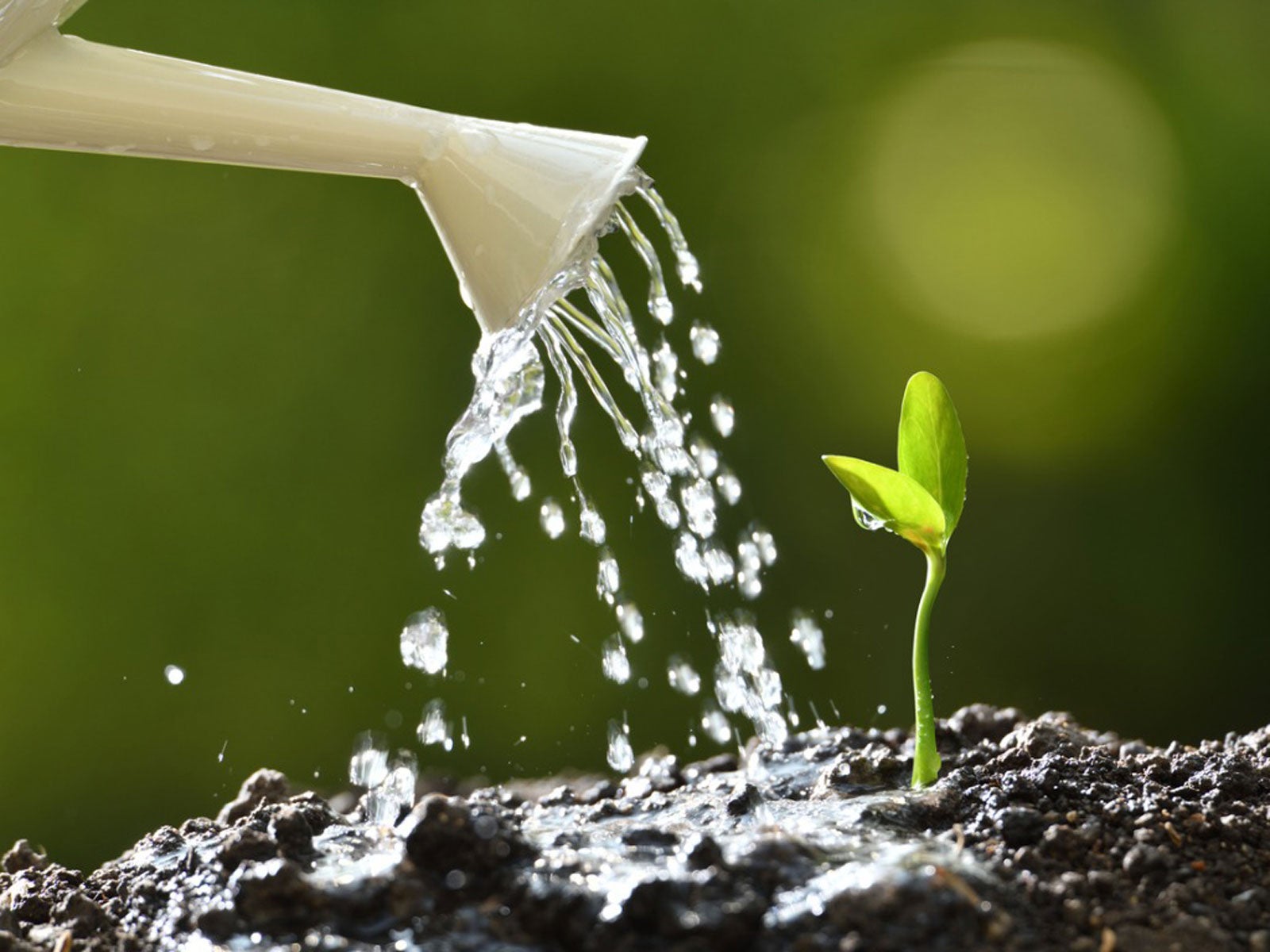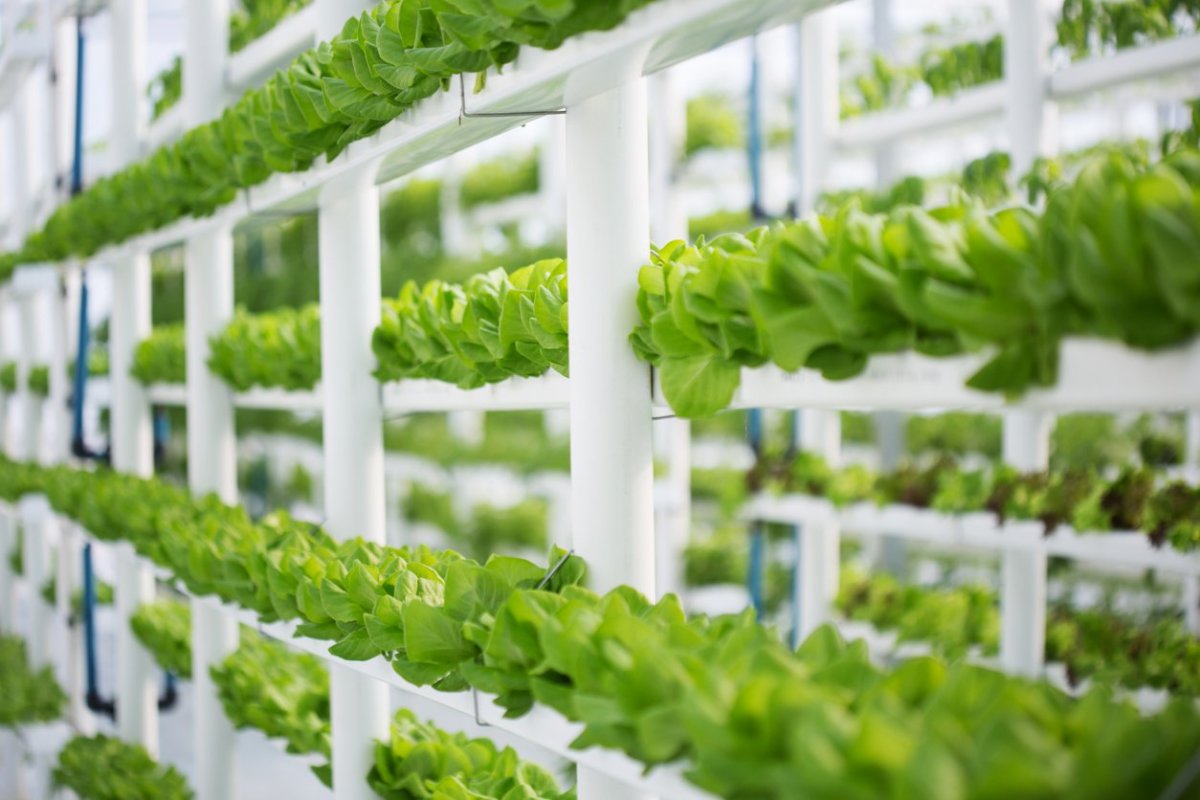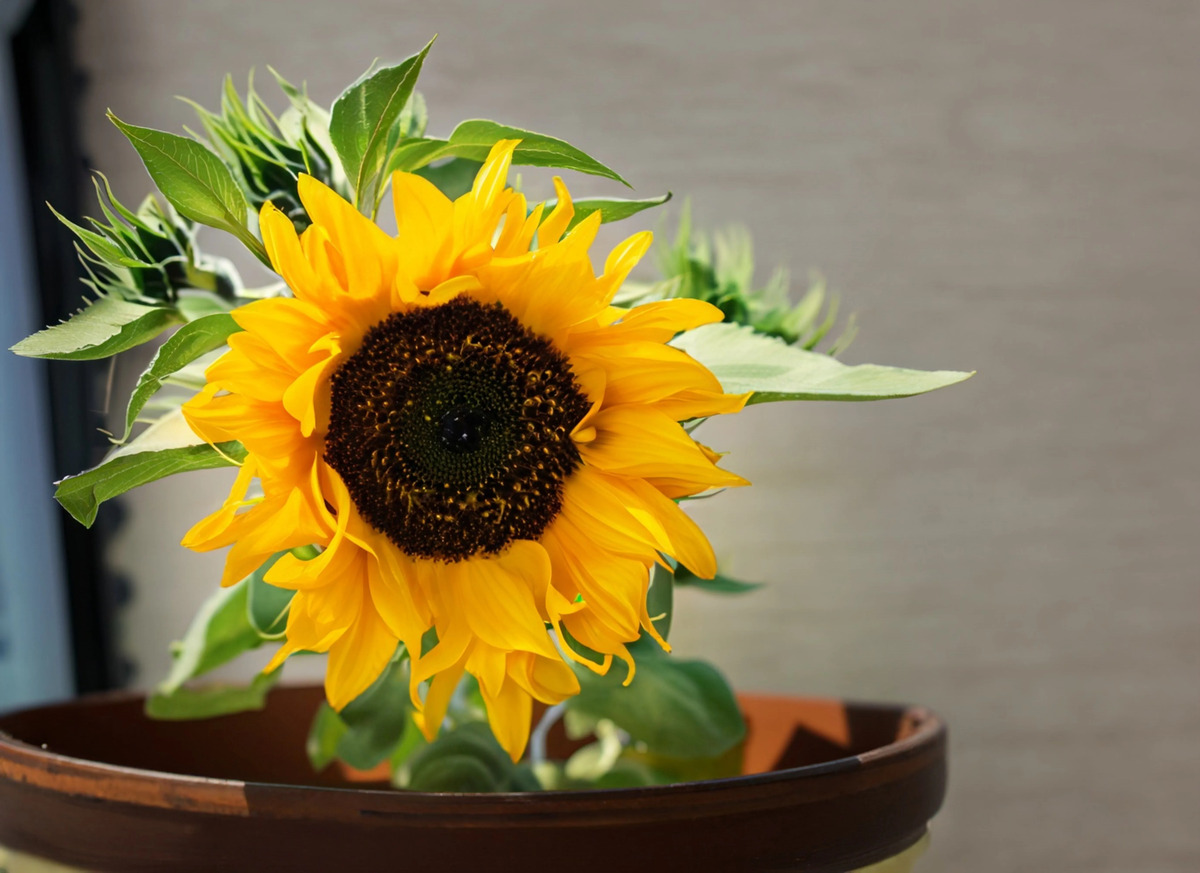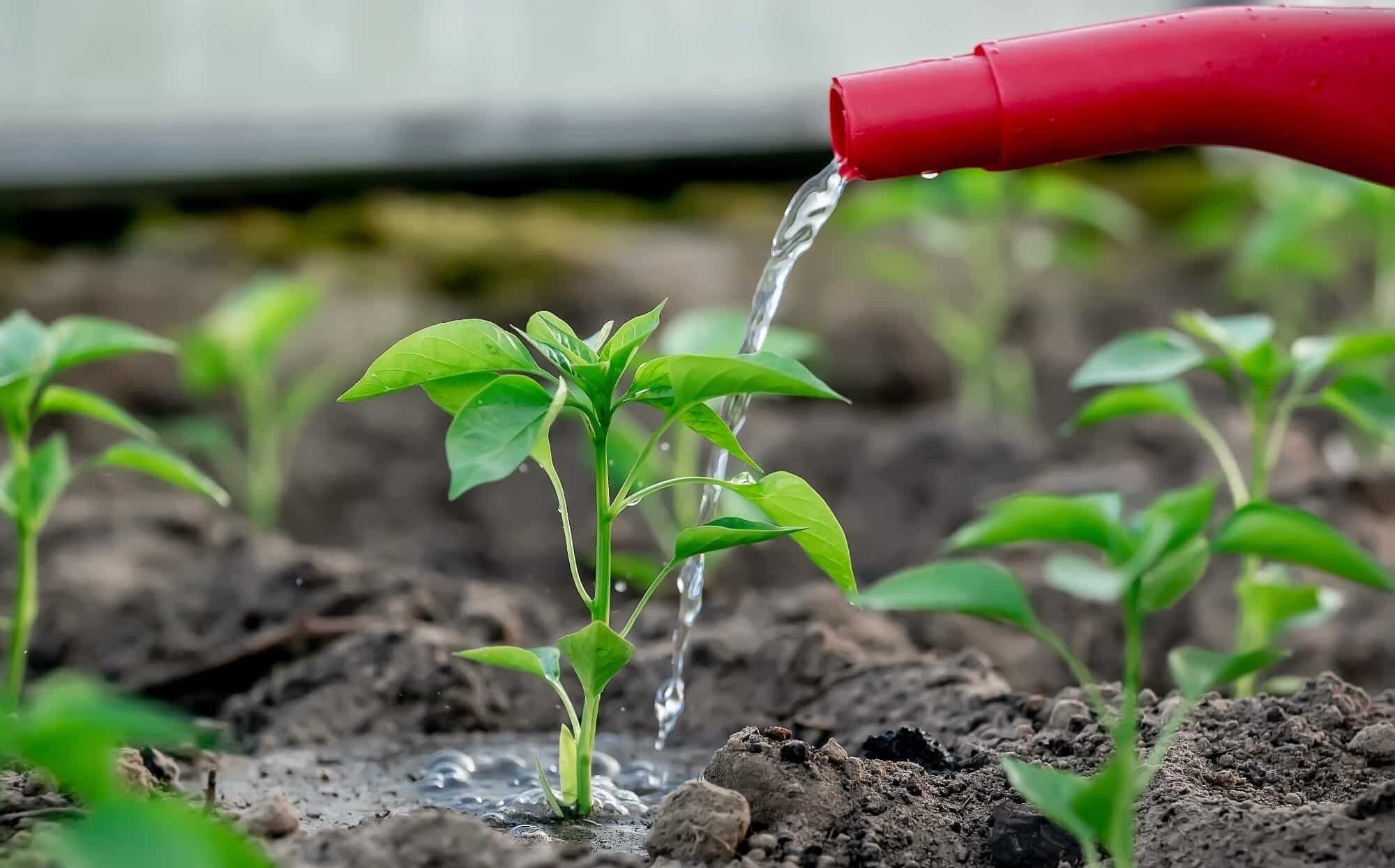Home>Gardening Techniques>Plant Care>How Often Water Outdoor Succulents


Plant Care
How Often Water Outdoor Succulents
Published: December 25, 2023
Learn the best plant care tips for outdoor succulents, including how often to water them. Enhance the beauty of your succulent garden with our expert advice.
(Many of the links in this article redirect to a specific reviewed product. Your purchase of these products through affiliate links helps to generate commission for Chicagolandgardening.com, at no extra cost. Learn more)
Table of Contents
Introduction
Welcome to the world of outdoor succulents, where you can create a stunning garden filled with vibrant and fascinating plant life. Succulents have gained immense popularity in recent years due to their unique, eye-catching appearance and low maintenance requirements. However, one aspect of succulent care that often causes confusion is watering. How often should you water outdoor succulents? This question can vary depending on several factors, including the type of succulent, climate, season, soil, and the type of pot or container used.
Understanding the proper watering needs of your outdoor succulents is crucial to their overall health and longevity. Overwatering or underwatering can lead to root rot, wilting, and ultimately the demise of your precious plants. In this article, we will explore the various factors to consider when determining how often to water your outdoor succulents, and we will provide you with some useful guidelines to ensure your succulent garden flourishes.
Whether you are a seasoned succulent enthusiast or just starting your plant care journey, this article will equip you with the knowledge and confidence to keep your outdoor succulents thriving. So let’s dive in and unravel the secrets of proper watering for outdoor succulents, ensuring they receive the hydration they need while avoiding water-related issues that can harm their health.
Factors to Consider for Watering Succulents Outdoors
When it comes to watering outdoor succulents, several factors come into play. Understanding these factors will help you tailor your watering routine and ensure the optimal health of your plants. Let’s take a closer look at the key considerations for watering succulents outdoors.
Type of Succulents: Succulents come in various shapes, sizes, and species, each with its unique water requirements. Some succulents have thick, fleshy leaves that store water and are more tolerant of drought conditions. Others have thinner leaves and require more frequent watering. It is essential to identify the type of succulents you have and understand their specific needs.
Climate: Succulents thrive in arid or semi-arid climates, where they have adapted to survive with minimal water. The climate in your region plays a significant role in determining how often you should water your outdoor succulents. If you live in a dry and hot climate, your succulents will require more frequent watering compared to those in cooler or more humid areas.
Season: The time of year also affects the watering needs of outdoor succulents. During the summer months when temperatures are high, succulents may need more water to survive. However, in colder months or during a dormant period, succulents require less frequent watering. It is important to adjust your watering schedule accordingly to avoid overwatering or underwatering during different seasons.
Soil: Well-draining soil is critical for the health of outdoor succulents. Succulents have shallow root systems that are susceptible to root rot if the soil retains too much moisture. Ensure your succulents are planted in a sandy or gravelly soil mix that allows water to drain freely, preventing waterlogged roots.
Pot or Container: The type of pot or container you use for your outdoor succulents can also impact their watering requirements. Terra cotta pots, for example, are more porous and allow water to evaporate faster, requiring more frequent watering. On the other hand, plastic or glazed ceramic pots retain moisture for longer, reducing the frequency of watering. Consider the material and size of your pot when determining your watering schedule.
By carefully considering these factors, you can create a watering routine that suits the needs of your outdoor succulents. Understanding the unique requirements of your plants and adapting your watering practices accordingly will promote their health and longevity.
Type of Succulents
Succulents are a diverse group of plants that come in various shapes, sizes, and species. Understanding the different types of succulents is crucial when it comes to watering them properly. Here are some common types of succulents and their unique water requirements.
- Rosette Succulents: This category includes popular succulents such as Echeveria, Sempervivum, and Graptopetalum. These succulents have a rosette shape with leaves arranged in a circular pattern. They store water in their thick, fleshy leaves and can tolerate drought conditions. Water rosette succulents thoroughly and allow the soil to dry out completely between waterings.
- Trailing Succulents: Trailing succulents like Senecio, Sedum, and String of Pearls have long, trailing stems that cascade down from containers or hang from walls. These succulents have leaves that are more compact and store less water compared to rosette succulents. Water them when the top inch of soil is dry.
- Cacti: Cacti are a unique group of succulents with spines and are often associated with desert landscapes. They have distinctive water-storing capabilities and are exceptionally drought-tolerant. Water cacti sparingly, allowing the soil to dry out completely between waterings.
- Agave: Agave succulents have thick, fleshy leaves with sharp tips and come in various sizes and colors. They can tolerate dry conditions but also benefit from occasional deep watering. Water agave plants when the top few inches of soil are dry.
It’s important to note that these are general guidelines, and each individual succulent may have slightly different watering needs. Consider the specific characteristics of your succulents and adjust your watering routine accordingly. Remember, it is better to underwater your succulents than to overwater them, as they are more resilient to drought conditions than excess moisture.
Climate
The climate in which you live plays a significant role in determining the watering needs of your outdoor succulents. Succulents naturally thrive in arid or semi-arid regions where water is scarce. Understanding the climate in your area will help you provide the appropriate amount of water for your succulents’ optimal growth and health.
Dry and Hot Climate: If you reside in a dry and hot climate, such as the desert southwest, your outdoor succulents will generally require more frequent watering. The high temperatures and arid conditions cause the soil to dry out quickly. Monitor your succulents closely and water them when the top inch or two of the soil is completely dry. Be cautious not to overwater, as even succulents can suffer from root rot if the soil remains wet for extended periods.
Cool and Humid Climate: In cooler and more humid climates, succulents may require less frequent watering. The higher humidity levels in the air provide some natural moisture to the plants. However, it’s essential to keep an eye on the soil moisture and adjust your watering schedule accordingly. Be mindful not to let your succulents sit in constantly wet conditions, as this can cause the roots to rot.
It’s important to note that climate conditions can vary significantly, even within the same region. Factors such as proximity to bodies of water, elevation, and microclimates within your garden can all impact the moisture levels. Monitor the soil and adjust your watering frequency based on the specific conditions of your environment.
By understanding and adapting to the climate in which your outdoor succulents are growing, you can provide them with the optimal conditions for healthy growth and prevent issues associated with over- or under-watering.
Season
The seasonality of your outdoor succulents also plays a crucial role in determining their watering needs. Different seasons bring varying weather conditions, temperature fluctuations, and changes in sunlight intensity, all of which can affect how often and how much you should water your succulents.
Summer: During the summer months, when temperatures are high and sunlight is intense, succulents generally require more frequent watering. The combination of heat and increased evaporation rates can quickly dry out the soil. As a general guideline, water your outdoor succulents when the top few inches of the soil feel dry. However, be vigilant and avoid overwatering, as excessive moisture in the soil can lead to root rot.
Fall and Spring: In the transitional seasons, such as fall and spring, succulents may require slightly less watering compared to the hot summer months. Monitor the soil moisture and adjust your watering frequency accordingly. Allow the soil to dry out partially between waterings, ensuring that your succulents receive adequate hydration without being overly saturated.
Winter: Winter is a period of dormancy for many succulents, and their watering needs decrease significantly during this time. With reduced sunlight and lower temperatures, the rate of evaporation is slower. Succulents may only need occasional light watering throughout the winter months, focusing on keeping the soil slightly moist rather than saturated. Be cautious not to let the soil dry out completely, as this can cause stress to the plants.
It’s important to note that these are general guidelines, and the specific watering needs of your succulents may vary based on their species, individual characteristics, and the climate of your region. Monitor your succulents closely, and adjust your watering schedule as needed to ensure they receive adequate moisture while avoiding water-related issues.
Soil
The type of soil in which your outdoor succulents are planted is crucial for their overall health and it directly affects their watering needs. Succulents thrive in well-draining soil that allows excess water to escape quickly, preventing the roots from sitting in waterlogged conditions. Here are some factors to consider when it comes to the soil for your succulents:
- Drainage: Optimal drainage is essential for succulents to thrive. Use a well-draining soil mix that consists of sandy or gritty materials such as perlite, pumice, or coarse sand. This allows water to flow through the soil, preventing waterlogged conditions that can lead to root rot.
- Organic Matter: While succulents prefer well-draining soil, a small amount of organic matter can help with moisture retention without compromising the drainage. Adding a small proportion of compost or peat moss to the soil mix can help retain some moisture for your succulents.
- Compaction: Avoid using compacted or heavy soils, as they prevent water from draining properly. Compacted soil can lead to water pooling around the roots and increases the risk of moisture-related issues. Ensure the soil is loose and airy, allowing excess water to flow out easily.
When planting or repotting your succulents, be sure to use a well-draining soil mix specifically formulated for succulents or create your own by combining components like peat moss, perlite, and sand. Regularly check the soil moisture by inserting your finger into the soil to gauge its dryness. Only water your succulents when the top few inches of soil feel dry to the touch.
Remember that soil plays a critical role in ensuring the health of your outdoor succulents. By providing them with well-draining soil, you can prevent water-related issues and promote healthy growth and development.
Pot or Container
The choice of pot or container for your outdoor succulents can impact their watering requirements. Different materials and sizes of containers can affect how water is retained or evaporated, directly influencing the frequency at which you should water your succulents. Here are some factors to consider when it comes to selecting a pot or container for your succulents:
- Material: The material of the container can affect water retention. Terra cotta pots, for example, are porous and allow moisture to evaporate more quickly, resulting in faster drying of the soil. Conversely, plastic or glazed ceramic pots retain moisture for longer periods, decreasing the frequency of watering.
- Drainage Holes: Adequate drainage is essential for succulents to prevent waterlogged soil. Choose pots or containers that have drainage holes at the bottom to ensure that excess water can escape, preventing root rot. If your favorite container doesn’t have drainage holes, consider drilling some yourself to facilitate proper drainage.
- Size: The size of the pot or container can influence watering needs. Larger pots have a greater soil volume, which generally retains moisture for longer periods. Smaller pots dry out more quickly and may require more frequent watering. Consider the size of your succulents and their growth potential when selecting the appropriate pot size.
When planting succulents in containers, ensure they have adequate drainage holes and use a well-draining soil mix specifically formulated for succulents. Monitor the moisture levels in the soil by checking the top few inches with your finger. Water your succulents only when the soil has dried out completely.
Additionally, be mindful of the location of your potted succulents. In hotter or sunnier areas, containers made of darker materials absorb more heat, potentially increasing the evaporation rate and the frequency of watering. Conversely, in cooler or shaded areas, containers made of lighter materials may help retain moisture for longer periods.
By carefully selecting the right pot or container for your outdoor succulents and ensuring proper drainage, you can establish an ideal environment for your plants and prevent water-related issues.
Signs of Overwatering
Overwatering is a common mistake made when caring for outdoor succulents. While it’s important to provide them with adequate hydration, excessive moisture can lead to various problems. Here are some common signs to look out for that may indicate your succulents are being overwatered:
- Yellowing Leaves: Overwatered succulents may display yellowing leaves that are soft and mushy to the touch. This is often a sign of root rot caused by excessive moisture.
- Wilting: While it may seem contradictory, overwatered succulents can also exhibit wilting. This is because the roots become suffocated and unable to absorb nutrients and oxygen efficiently.
- Leaf Drop: Overwatered succulents may shed leaves, especially the lower ones. These leaves often appear yellow or translucent and can easily detach from the plant when touched.
- Mushy Stem: Overwatered succulents may develop a soft, mushy stem. This indicates that the plant is struggling to support itself due to root rot caused by excess water.
- Mold or Fungus Growth: Excessive moisture can create a favorable environment for mold, fungus, or other pathogens. If you notice any signs of mold or fungus on the soil surface or on the succulent itself, it may be a sign of overwatering.
If you observe any of these signs, it’s crucial to adjust your watering practices immediately. Allow the soil to dry out completely before considering watering your succulents again. It’s better to underwater succulents than to overwater them, as they are more resilient to drought conditions than excess moisture.
Remember that prevention is key when it comes to overwatering. By understanding your succulents’ specific watering needs and ensuring proper drainage in the soil and container, you can avoid the detrimental effects of overwatering and promote the overall health and beauty of your succulent garden.
Signs of Underwatering
Underwatering is another common issue that can negatively affect the health of outdoor succulents. While succulents are known for their tolerance to drought conditions, they still require regular watering. Here are some signs that may indicate your succulents are not getting enough water:
- Shriveled leaves: When succulents lack sufficient water, their leaves may start to shrivel or appear wrinkled. This is a natural response to water loss as the plant tries to conserve moisture.
- Leaf discoloration: Underwatered succulents may show signs of discoloration, with leaves turning yellow or brown. This can be an indication of dehydration and stress.
- Drooping or wilting: Succulents that are underwatered may start to droop or wilt. This is a protective mechanism where the plant conserves energy by reducing water loss through transpiration.
- Slow or stunted growth: Inadequate water can hinder the growth of succulents. If you notice that your plants are not growing as quickly as they should or if there is minimal new growth, it may be a sign of underwatering.
- Dry and crumbly soil: If the soil in the container feels completely dry and crumbly, it is a clear indication that your succulents are not receiving enough water. Dry soil will not hold any moisture for the roots to absorb.
If you notice any of these signs, it is important to adjust your watering routine to provide your succulents with the hydration they need. Increase the frequency of watering and ensure that the soil is thoroughly moistened during each watering session. However, be cautious not to overwater as succulents are susceptible to root rot in excessively wet conditions.
Regularly monitoring your succulents and understanding their specific watering needs will help prevent the negative effects of underwatering. By providing them with adequate hydration, you can ensure they thrive and maintain their beautiful and resilient nature.
Watering Frequency for Outdoor Succulents
Determining the ideal watering frequency for your outdoor succulents can be challenging, as it depends on various factors such as the type of succulent, climate, season, soil, and pot. However, here are some general guidelines to help you establish a watering routine:
- Observe the soil moisture: Before watering, always check the moisture level of the soil. The top inch or two of the soil should be completely dry before you water your succulents again. Insert your finger into the soil and if it feels dry, then it’s time to water.
- Consider the weather: Take into account the current weather conditions, including temperature, humidity, and rainfall. Succulents may require more frequent watering during hot and dry periods compared to cooler and more humid seasons.
- Adjust watering based on season: As previously discussed, the watering needs of succulents can vary depending on the season. During the spring and summer, when succulents are actively growing, they usually require more frequent watering. In fall and winter, when they are in a dormant state, reduce the watering frequency.
- Don’t follow a rigid schedule: Avoid watering your succulents on a strict schedule. Instead, focus on the needs of each individual plant. Succulents have differing water requirements, even within the same species. Adjust your watering pattern based on the specific needs and characteristics of your succulents.
- Err on the side of underwatering: It is better to underwater your succulents than to overwater them. Succulents are adapted to store water in their leaves and stems, and they can tolerate short periods of drought. If in doubt, it’s safer to wait and let the soil dry out before watering again.
Remember that these guidelines are general in nature, and it is crucial to pay attention to the unique needs of your outdoor succulents. Monitor the condition of the plants and adjust your watering frequency accordingly, ensuring they receive enough water for healthy growth while avoiding water-related issues.
Recommended Watering Schedule
While it can be challenging to provide an exact watering schedule for outdoor succulents due to the various factors involved, here is a recommended watering schedule to serve as a starting point:
- Spring and Summer: During the active growing season, succulents typically require more frequent watering. Water them thoroughly when the top inch or two of the soil feels dry. Depending on the climate and succulent species, this may range from once a week to every two weeks.
- Fall and Winter: In the cooler seasons, when succulents are in their dormant phase, reduce the watering frequency. Water them sparingly, allowing the soil to dry out partially between waterings. In some cases, watering once every few weeks or once a month may be sufficient.
- Monitor individual succulents: While a watering schedule can serve as a general guideline, it is essential to monitor each succulent individually. Factors such as pot size, soil type, and weather conditions can influence the watering needs of each plant. Adjust the watering frequency as necessary based on the specific requirements of each succulent.
Remember that the goal is to provide adequate moisture to your succulents without overwatering. It is better to underwater succulents than to subject them to excessive moisture, which can lead to root rot. Always prioritize good drainage and observe the signs of both overwatering and underwatering to guide your watering schedule.
As you gain more experience with your outdoor succulents, you will develop a better understanding of their specific watering needs. Don’t be afraid to adjust your watering schedule as necessary to ensure the health and vitality of your succulent garden.
Best Practices for Watering Outdoor Succulents
Proper watering is essential for the health and vitality of your outdoor succulents. By following these best practices, you can ensure that your succulents receive the right amount of water and thrive in your garden:
- Establish a watering routine: Develop a consistent watering routine that considers the needs of your succulents and the factors influencing their watering requirements. This will help prevent under- or overwatering.
- Check the soil moisture: Before watering, always check the moisture level of the soil. Insert your finger into the soil up to an inch or two. If the soil feels dry at this depth, it’s time to water your succulents.
- Water the soil, not the leaves: Direct the water towards the base of the plant, avoiding wetting the leaves. This helps prevent issues like rot and fungal diseases.
- Use a watering can or gentle stream: When watering, use a watering can or a gentle stream of water to prevent excessive force that can damage the succulent’s delicate leaves and roots.
- Allow for proper drainage: Ensure that your succulents are planted in pots or containers with drainage holes. This allows excess water to escape and prevents water from pooling around the roots, which can cause root rot.
- Water deeply: When watering, aim to thoroughly soak the soil until water drains out from the bottom of the pot. This encourages the development of a healthy root system and helps succulents tolerate drought conditions.
- Adjust watering according to seasons: Modify your watering routine based on the changing seasons and weather conditions. Succulents generally require more water during the growing season and less water during dormancy.
- Monitor for signs of overwatering and underwatering: Regularly observe your succulents for signs of overwatering or underwatering, such as yellowing leaves, wilting, or shriveling. Adjust your watering schedule accordingly to maintain a healthy balance.
By following these best practices, you can ensure that your outdoor succulents receive the right amount of water to keep them thriving. Remember that every succulent is unique, so it’s essential to pay attention to their individual needs and adjust your watering routine accordingly.
Conclusion
Watering outdoor succulents can be a delicate balancing act, but with the right knowledge and practices, you can create a thriving succulent garden that impresses with its beauty and resilience. By considering factors such as the type of succulent, climate, season, soil, and pot, you can establish a watering routine that meets the unique needs of your succulents.
Remember to monitor the soil moisture, adjust watering based on the specific needs of your succulents, and be attentive to signs of overwatering or underwatering. It is better to underwater succulents than to overwater them, as they have adapted to survive in dry conditions.
Additionally, implementing best practices such as watering at the base of the plant, using a gentle stream of water, ensuring proper drainage, and adjusting watering frequency according to seasons will contribute to the overall health and vitality of your succulents.
Always keep in mind that succulents are resilient plants, but they still require care and attention. By understanding their unique needs and providing them with the optimal amount of water, you can enjoy a stunning succulent garden that thrives for years to come.
Happy gardening and may your outdoor succulents thrive with just the right amount of hydration!
